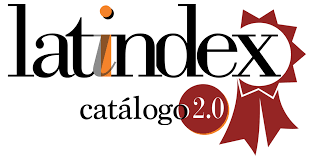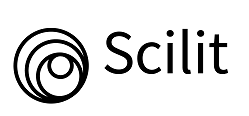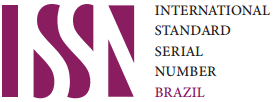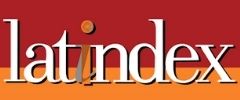Early detection of lato sensu epilepsy: diagnostic and prognostic importance in autism spectrum disorders
DOI:
https://doi.org/10.25118/2236-918X-6-3-5Keywords:
Epilepsy, childhood autismAbstract
The association between autism and epilepsy is more than casual or random, since there is an increase in epilepsy detection after puberty in subjects with autism spectrum disorders (ASD). More frequent in children under 5 years of age and in adolescents, epilepsy presents rates as high as 70% in childhood disintegrative disorders. However, there is insufficient data on the prevalence of ASD among subjects with epilepsy. Conservative authors state that the prevalence of epilepsy in ASD is 1 to 2% higher than in the general population, with ASD being a risk factor for epilepsy. Research has benefited from better structured, universal diagnostic criteria for ASD, as well as from a new international classification of epilepsies, with better identification and investigation of epilepsy in different ASD subgroups. The strong association between ASD and epilepsy is no longer questioned. Establishing a cause-effect relationship for epilepsy and ASD is tempting. However, there is no evidence that medical or surgical treatment of epilepsy will change the prognosis of ASD. Specific studies conducted with this population are needed to elucidate the actual role of epilepsy in ASD.
Downloads
References
Creak EM. Childhood psychosis. A review of 100 cases. Br J Psychiatry. 1963;109:84-9.
White PT, DeMyer W, DeMyer M. EEG abnormaliti es in early childhood schizophrenia: a double-blind study of psychiatrically disturbed and normal children during promazine sedati on. Am J Psychiatry. 1964;120:950-8.
Lott er V. Epidemiology of auti sti c conditi ons in young children. Soc Psychiatry. 1966;1:124-37.
Ritvo ER, Ornitz EM. Auti sm: diagnosis, current research and management. New York: Spectrum; 1976.
Assumpção FB Jr. Transtornos abrangentes do desenvolvimento. In: Assumpção FB Jr, Kuczynski E. Tratado de psiquiatria da infância e adolescência. 2ª ed. São Paulo: Atheneu; 2012. p. 275-98.
Associação Americana de Psiquiatria. Manual Diagnósti co e Estatí sti co de Transtornos Mentais, 5ª edição (DSM-5). Porto Alegre: Artmed; 2014.
Viscidi EW, Johnson AL, Spence SJ, Buka SL, Morrow EM, Triche EW. The associati on between epilepsy and auti sm symptoms and maladapti ve behaviors in children with auti sm spectrum disorder. Auti sm. 2014;18:996-1006.
Stoltenberg C, Schjølberg S, Bresnahan M, Hornig M, Hirtz D, Dahl C, et al. The Auti sm Birth Cohort: a paradigm for gene-environment-ti ming research. Mol Psychiatry. 2010;15:676-80.
Fisher RS, Acevedo C, Arzimanoglou A, Bogacz A, Cross JH, Elger CE, et al. ILAE offi cial report: A practi cal clinical defi niti on of epilepsy. Epilepsia. 2014;55:475-82.
Berg AT, Berkovic SF, Brodie MJ, Buchhalter J, Cross JH, van Emde Boas W, et al. Revised terminology and concepts for organizati on of seizures and epilepsies: report of the ILAE Commission on Classifi cati on and Terminology, 2005–2009. Epilepsia. 2010;51:676-85.
Davies S, Heyman I, Goodman R. A populati on survey of mental health problems in children with epilepsy. Dev Med Child Neurol. 2003;45:292-5.
Brooks-Kayal A. Epilepsy and auti sm spectrum disorders: are there common developmental mechanisms? Brain Dev. 2010;31:731-8.
Canitano R. Epilepsy in auti sm spectrum disorders. Eur Child Adolesc Psychiatry. 2007;16:61-6.
Spence SJ, Schneider MT. The role of epilepsy and epilepti form EEGs in auti sm spectrum disorders. Pediatr Res. 2009;65:599-606.
Tuchman R, Rapin I. Epilepsy in auti sm. Lancet Neurol. 2002;1:352-8. 16. Tuchman RF, Rapin I, Shinnar S. Auti sti c and dysphasic children. II: epilepsy. Pediatrics. 1991;88:1219-25.
Hartley-McAndrew M, Weinstock A. Auti sm spectrum disorder: correlati on between aberrant behaviors, EEG abnormaliti es and seizures. Neurol Int. 2010;2:e10.
Volkmar FR, Nelson DS. Seizure disorders in auti sm. J Am Acad Child Adolesc Psychiatry. 1990;29:127-9.
Giovanardi Rossi P, Posar A, Parmeggiani A. Epilepsy in adolescents and young adults with auti sti c disorder. Brain Dev. 2000;22:102-6.
Robinson SJ. Childhood epilepsy and auti sm spectrum disorders: psychiatric problems, phenotypic expression, and anti convulsants. Neuropsychol Rev. 2012;22:271-9.
Gabis L, Pomeroy J, Andriola MR. Auti sm and epilepsy: cause, consequence, comorbidity, or coincidence? Epilepsy Behav. 2005;7:652-6.
Russo AF, Kuczynski E. Epilepsia. In: Assumpção FB Jr, Kuczynski E. Auti smo infanti l: novas tendências e perspecti vas. 2ª ed. São Paulo: Atheneu; 2015. p. 49-60.
Downloads
Published
How to Cite
Conference Proceedings Volume
Section
License

This work is licensed under a Creative Commons Attribution-NonCommercial 4.0 International License.
Debates em Psiquiatria allows the author (s) to keep their copyrights unrestricted. Allows the author (s) to retain their publication rights without restriction. Authors should ensure that the article is an original work without fabrication, fraud or plagiarism; does not infringe any copyright or right of ownership of any third party. Authors should also ensure that each one complies with the authorship requirements as recommended by the ICMJE and understand that if the article or part of it is flawed or fraudulent, each author shares responsibility.
Attribution-NonCommercial 4.0 International (CC BY-NC 4.0) - Debates em Psiquiatria is governed by the licencse CC-By-NC
You are free to:
- Share — copy and redistribute the material in any medium or format
- Adapt — remix, transform, and build upon the material
The licensor cannot revoke these freedoms as long as you follow the license terms. Under the following terms:
- Attribution — You must give appropriate credit, provide a link to the license, and indicate if changes were made. You may do so in any reasonable manner, but not in any way that suggests the licensor endorses you or your use.
- NonCommercial — You may not use the material for commercial purposes.
No additional restrictions — You may not apply legal terms or technological measures that legally restrict others from doing anything the license permits.






























